
The location of the house is in a village called Rajsamadhiyala, 18 km away from Rajkot city. The site is located on the periphery of the village, on a mound and next to the village water tank. Being a hilly region, the site and the plot offered breath-taking vistas of the horizon.
‘A retired couple wanting to build a small house in a village away from the rush of the town.’
How to build minimum and what construction techniques to be used (where it is also helpful for the villagers) was the main concern of the design.
Design as integration of materials, details and make the house energy efficient by use of locally available materials and applying appropriate methods of construction.
Design and Location of Functions
The location of the main house and landscape for the house is done in north and towards the southern part of the plot. Leaving the north part of the site open to the horizon and vistas, the endemic shade-giving trees are to be planted in the south. Ground fixing is only done with locally available bricks to provide direct access to the usable open areas and that too without any impervious subgrade thus allowing maximum rainwater to percolate.
The orientation of the functions is best suitable to efficiently use the sun’s direction. Hence, reliance on artificial lighting and ventilation is very minimal.

Material and construction
Primary materials such as brick, stone and terracotta tumblers(for the roof) are resourced locally reducing the cost of procurement and also making use of available local skills. Potter was given a special skill to fire the tumbler in order to derive the desired colour. The roof is made with a locally made terracotta tumbler. The technology used is an offshoot of the one developed by CSV Wardha and draws upon it in order to achieve the desired spatial experience. This construction method achieves faster erection time (only three days from start to removal of shuttering; another week for the mortar to set); uses no steel or concrete (as in a conventional RCC slab). Since it is a catenary curve, it being in pure compression requires minimal support for load bearing. The roof thus saves time and labour resources.

The masonry opening sizes are designed and located as per the old windows procured from windows of demolished buildings.
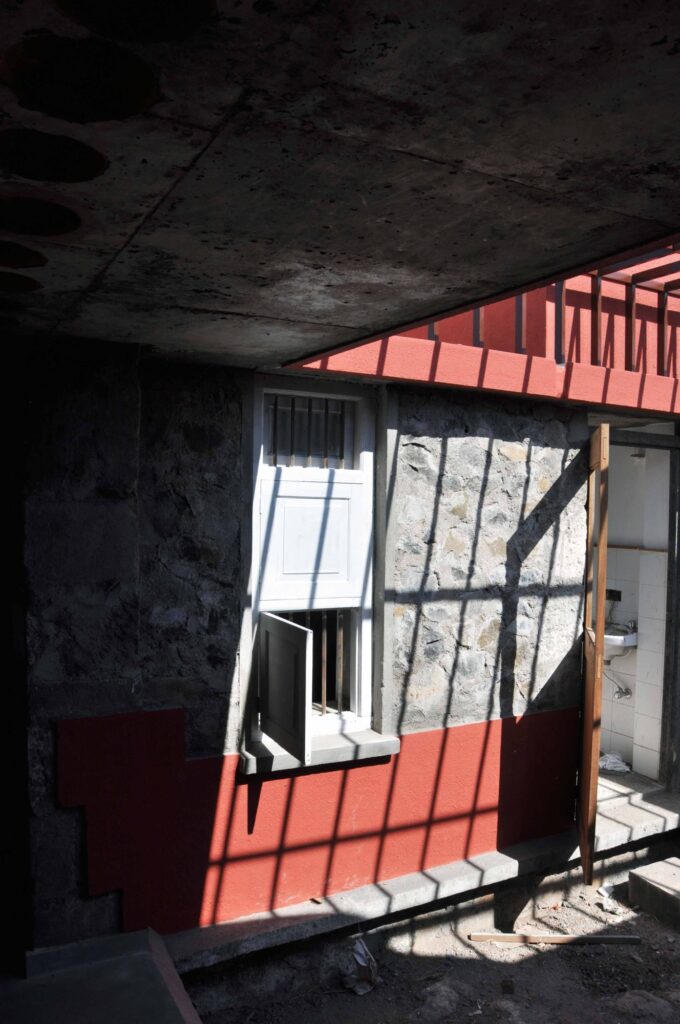
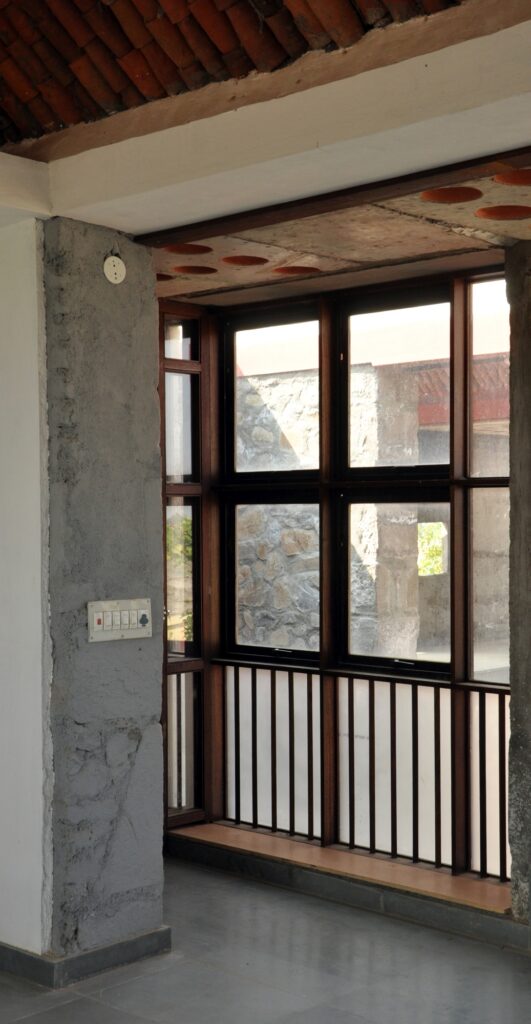
The flat roof (in RCC), wherever required, is designed in cognisance with the idea to save on the concrete being used in the slab. The fired clay bowls are used as filler material to reduce material consumption. The bowls in turn are locally produced cutting down on total volume cost by 30%.
The semi open area and outdoor paving is done with waste glazed ceramic jar lids and used fire bricks from local foundry kilns. These are procured free of cost from the ceramic factory as waste material. This had multiple advantages:
- Using industrial waste in a manner that is harmless for residential use.
- Thus not using fresh materials,
- Clearing the debris sites near to the ceramic industries. This being non bio-degradable, would have remained at such sites for ever.
- By using the material from debris sites, we could open up top soil by a little bit. But if more users take to this idea then vast stretch of land fill areas can be opened.
- Of course, cutting down on the cost of the project.

The details of the house are designed in simplest manner to work efficiently using the minimum material amalgamation.
Aesthetics and finishes
The design is integrated in terms of finishes. The walls of semi open areas of the living room are kept rough keeping in mind the semi-arid nature of the site. It will have a rustic feel typical of a village house. These areas have rough stone flooring along with fire clay brick patterns. The interior of the bedroom and of the kitchen are similarly plastered keeping in mind the need to achieve a certain level of cleanliness. These areas have polished natural stone finish. The external surfaces in stone are left exposed.

Post Occupancy Energy Savings
The waste water from the kitchen is directly fed in to the vegetable garden. Provision for a grease trap is made to remove access oil component. There is a provision for a bio-gas plant (not installed currently). When the desired occupancy levels are reached (two adults and two children using the toilets everyday) and in the next phase, this gas plant can generate gas enough to cook food one time a day for a family of four. Thus the overall savings would be 50% of the conventional LPG usage.The roof water is fed into a 5000 litre underground tank. This will be sufficient to provide drinking water to the family during the water scarce summer months from March to June.
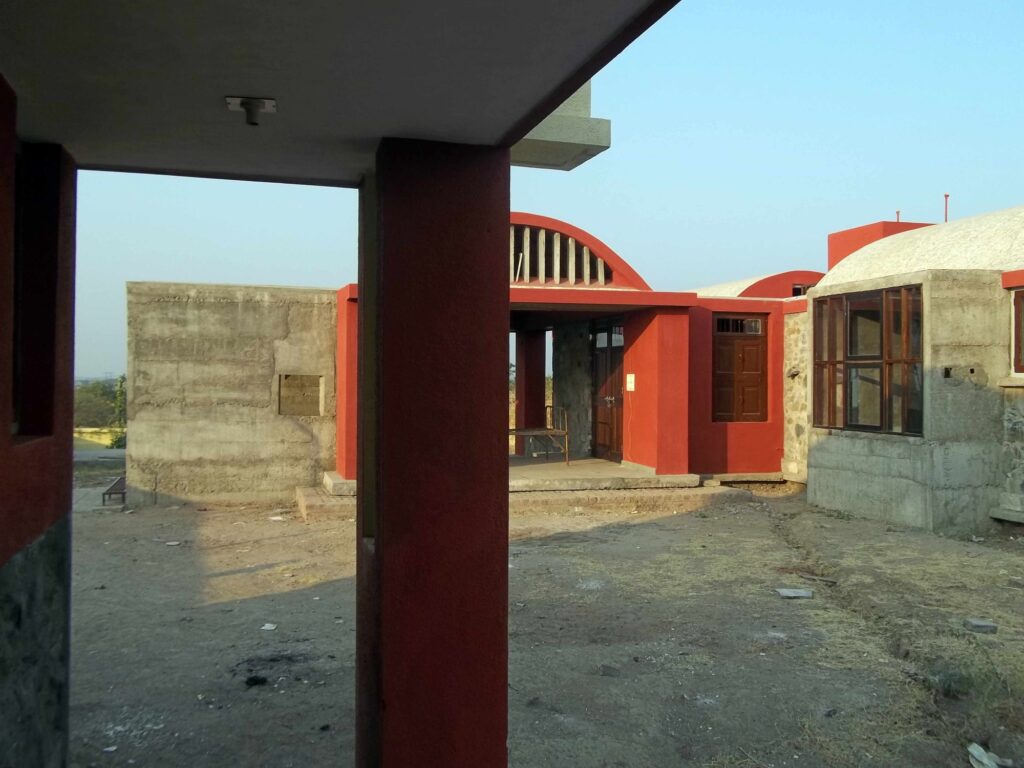
Drawings
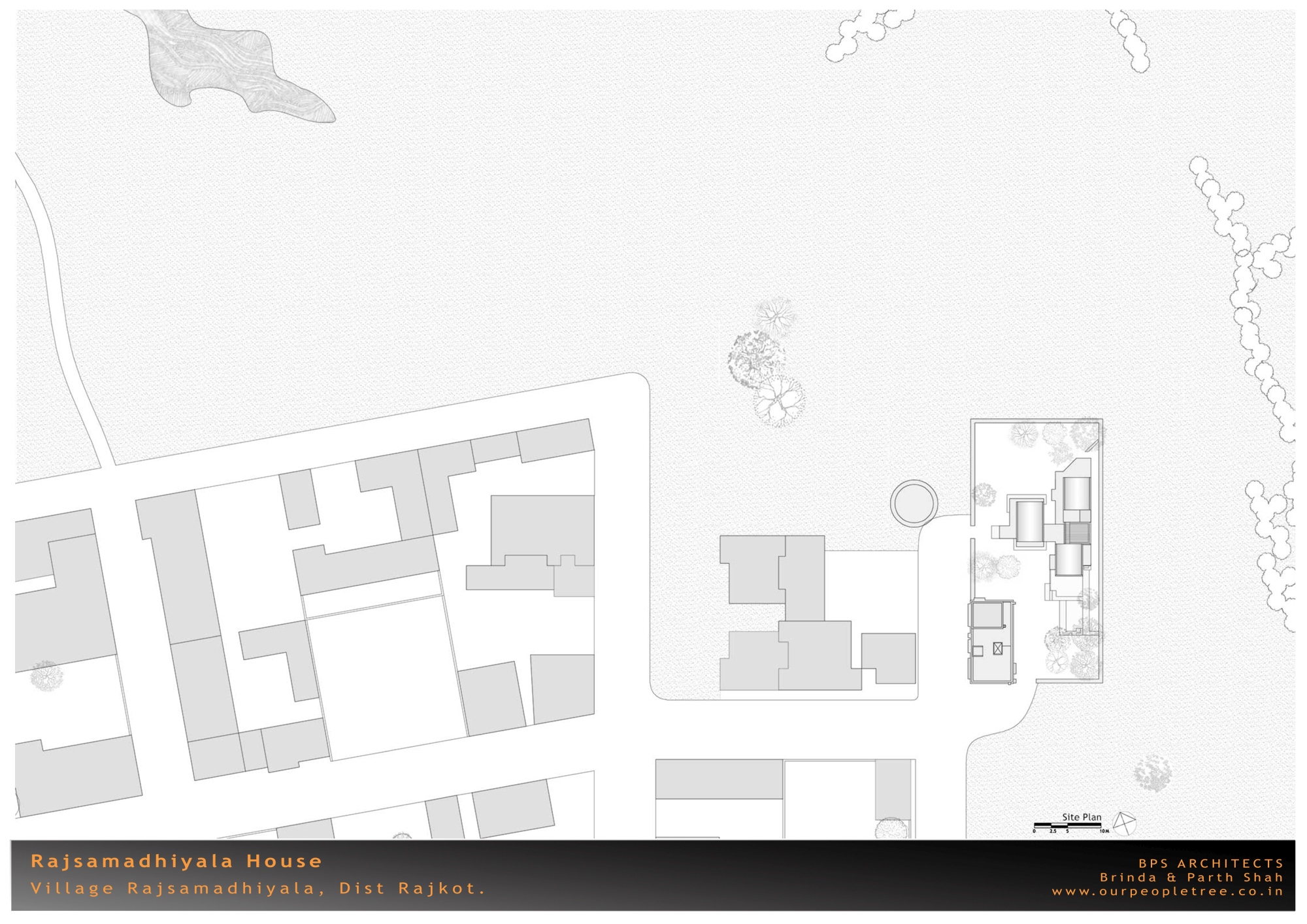
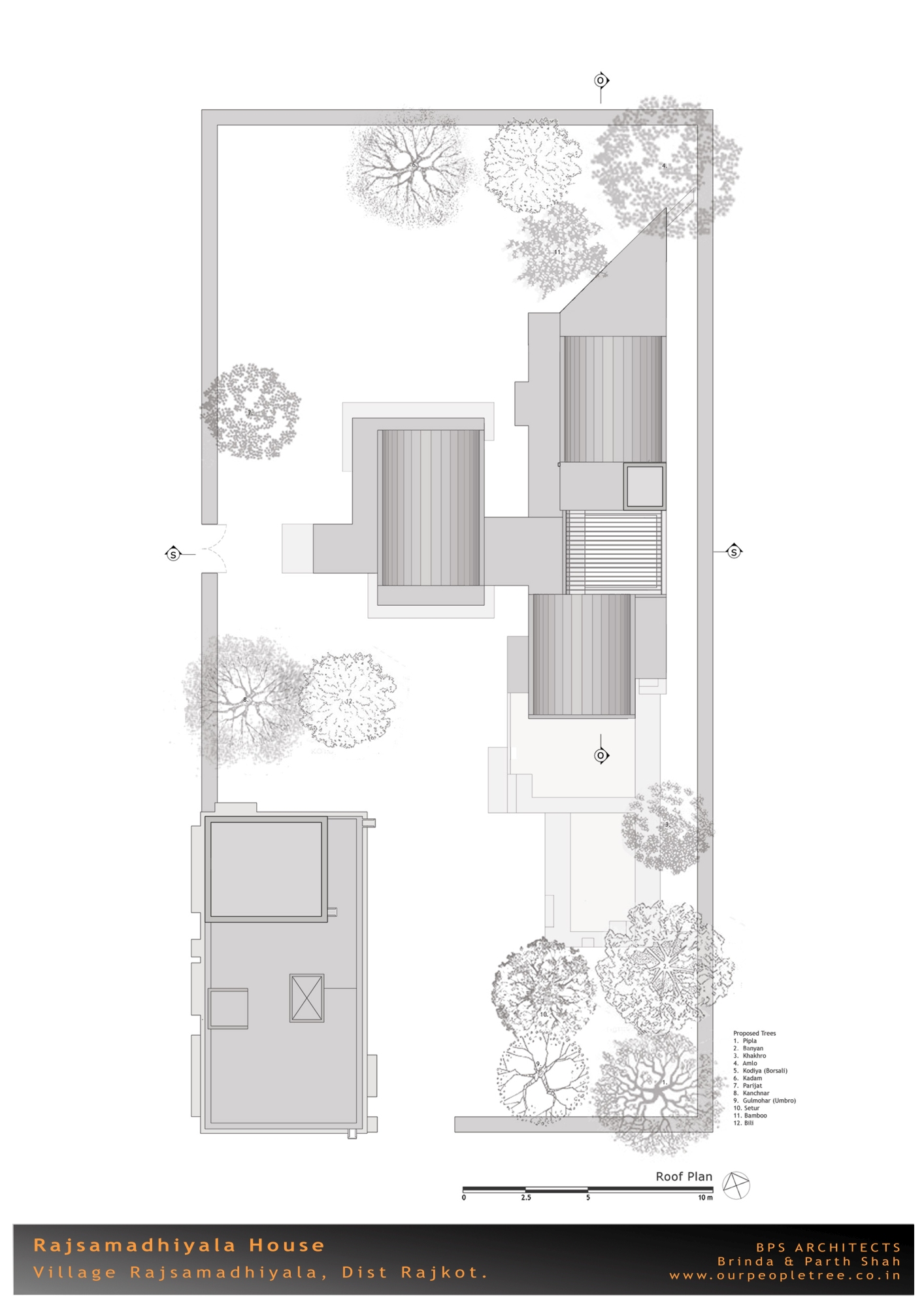
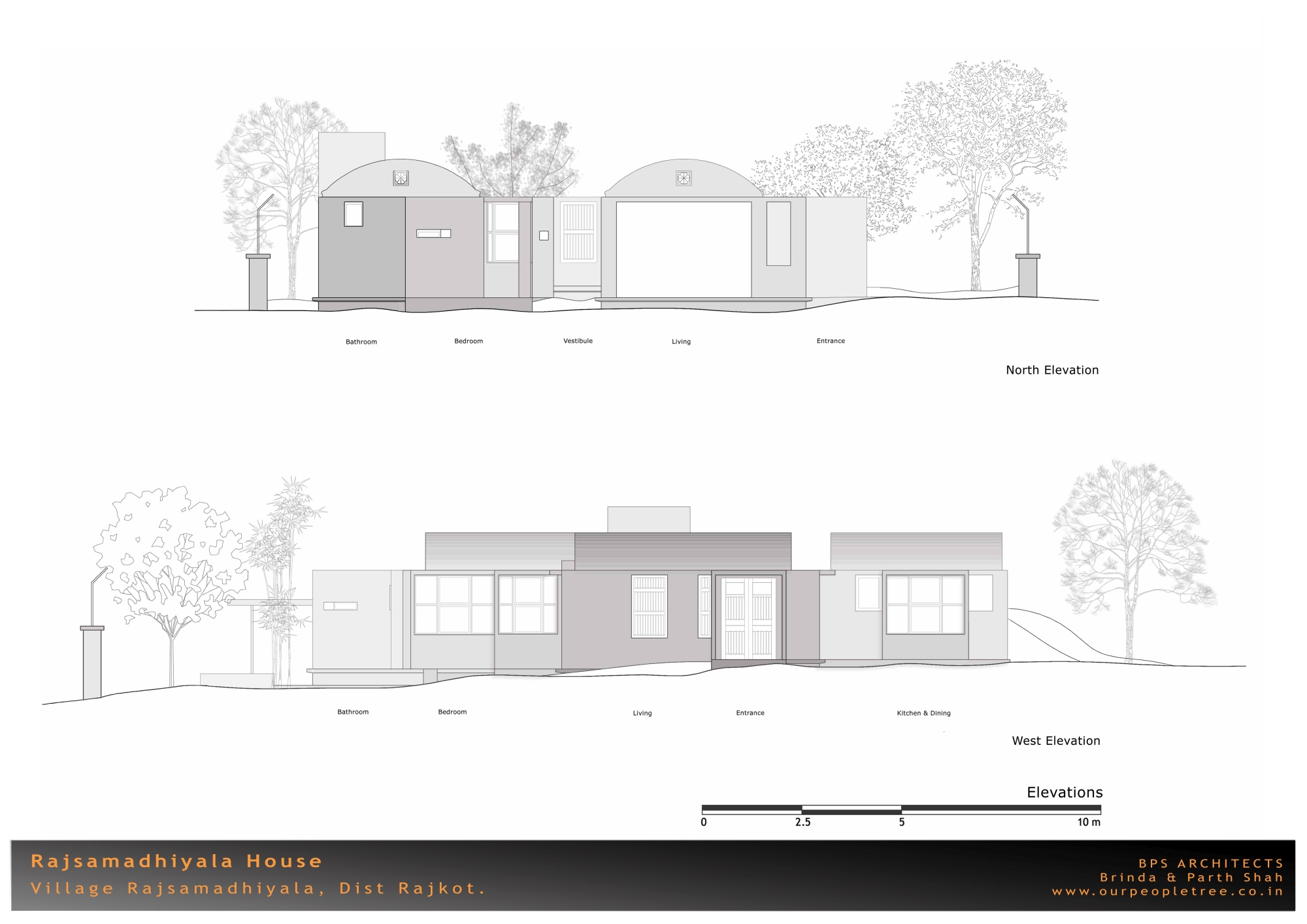
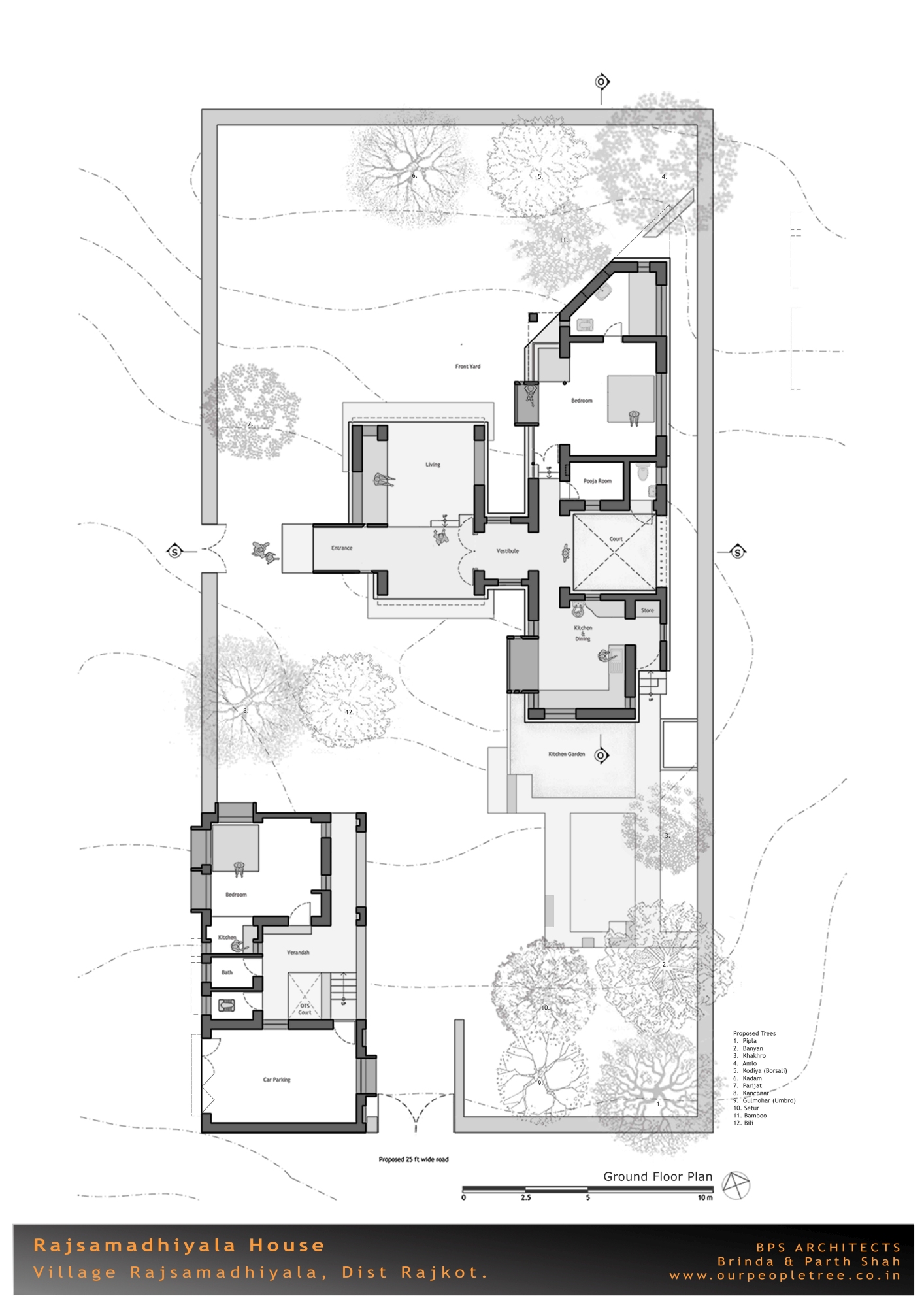
Project Facts
Name of the project, location: Rajsamadhiyala House, Village Rajsamadhiyala, Dist Rajkot, Gujarat
Name of the firm, location: BPS Architects, Natvarlal Nyalchand House, 2-Collegewadi, Dr. Radhakrishnan Road, Rajkot-360001 Gujarat
Design team (architecture & interiors):
Ar. Parth Uday Shah (Principal Architect)
Ar. Brinda Parth Shah (Principal Architect)
Structural Eng: Mr.Vinod R Shah
Built-up area: 203 Sq.mt.
Cost of project: 23 Lakhs
Year of completion : December 2011










One Response
Excellent minimalism and elderly friendly